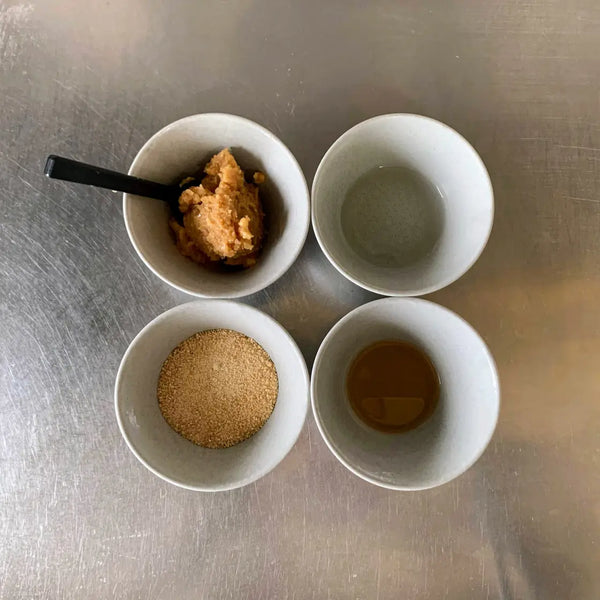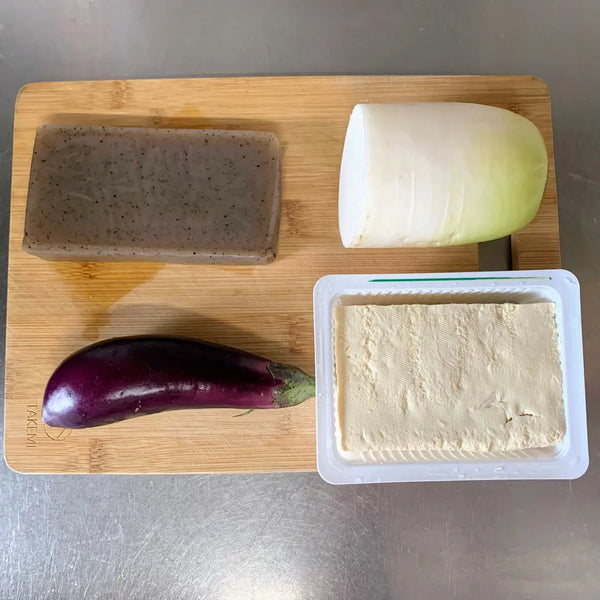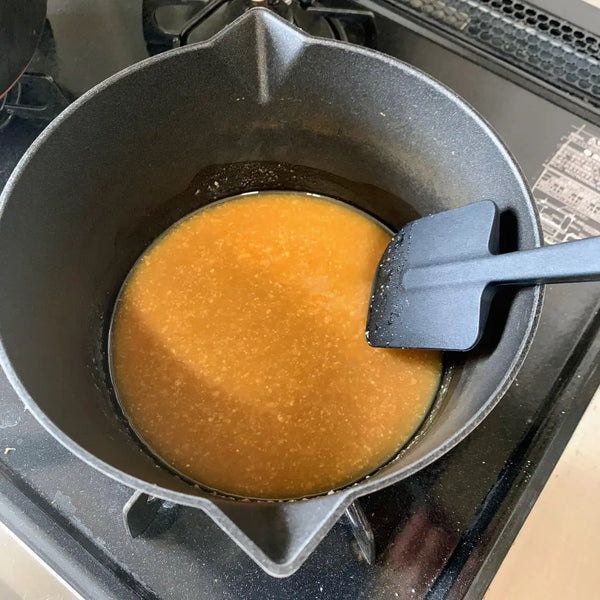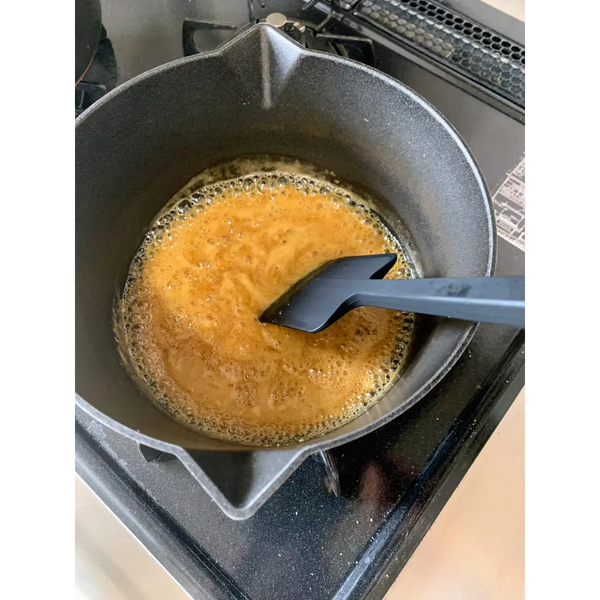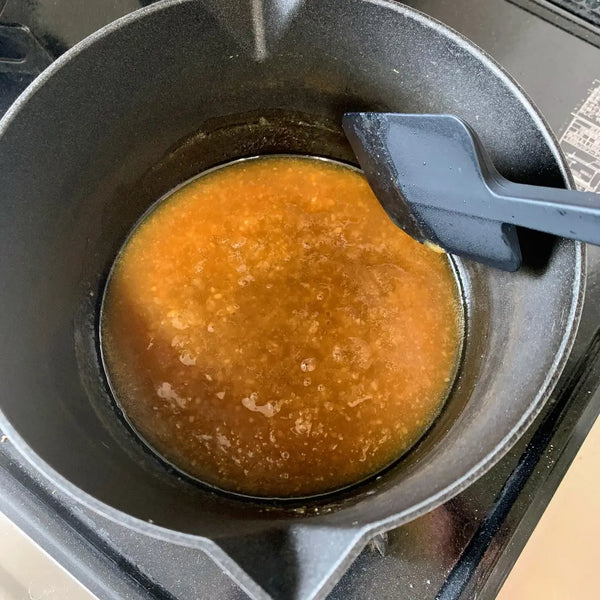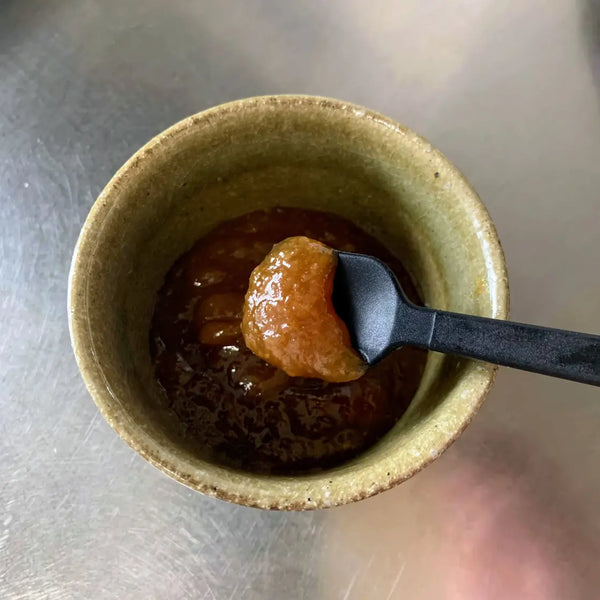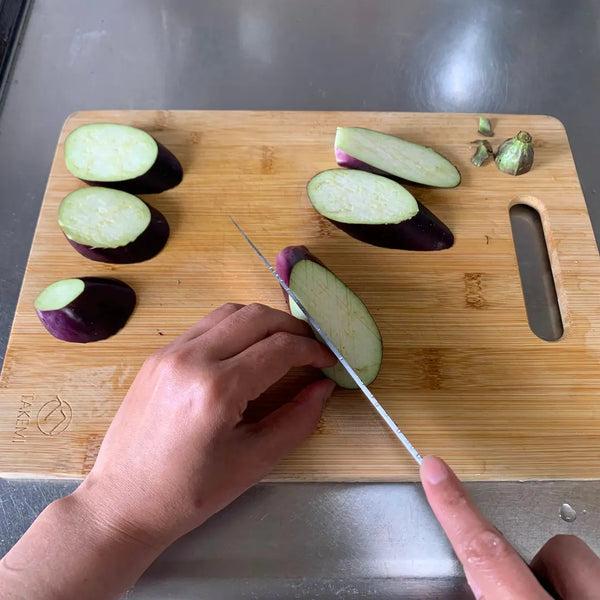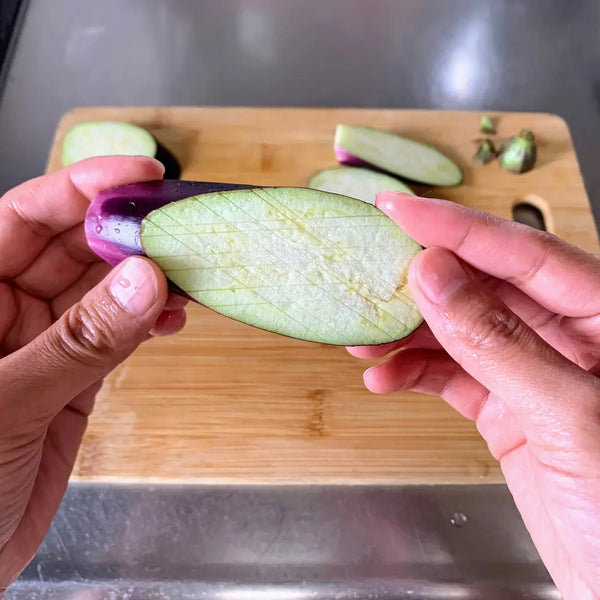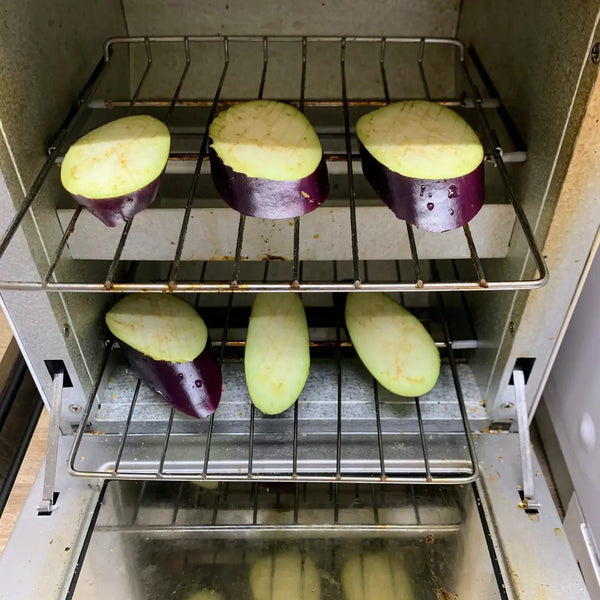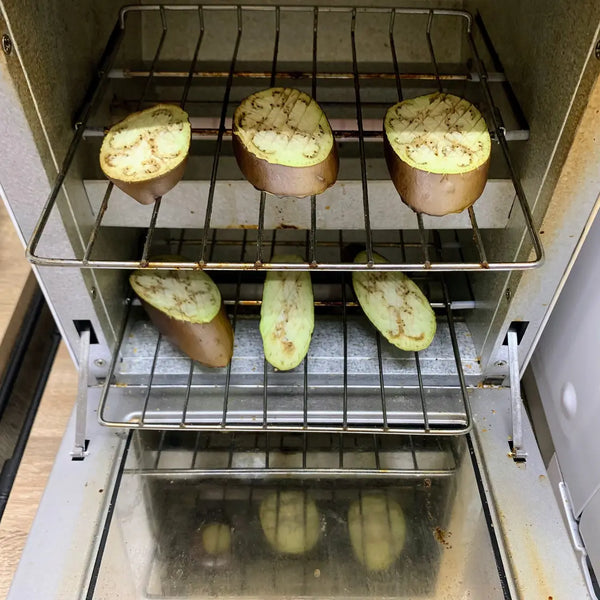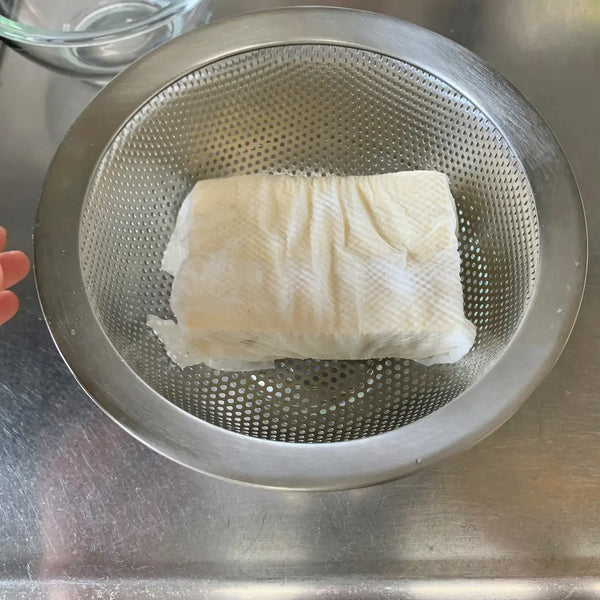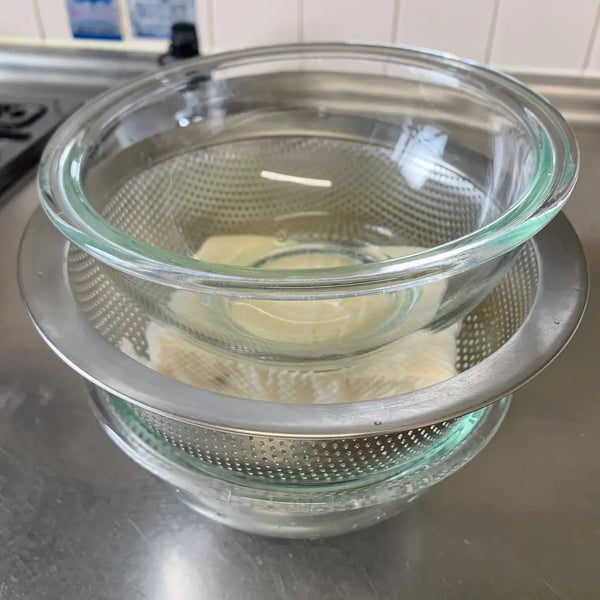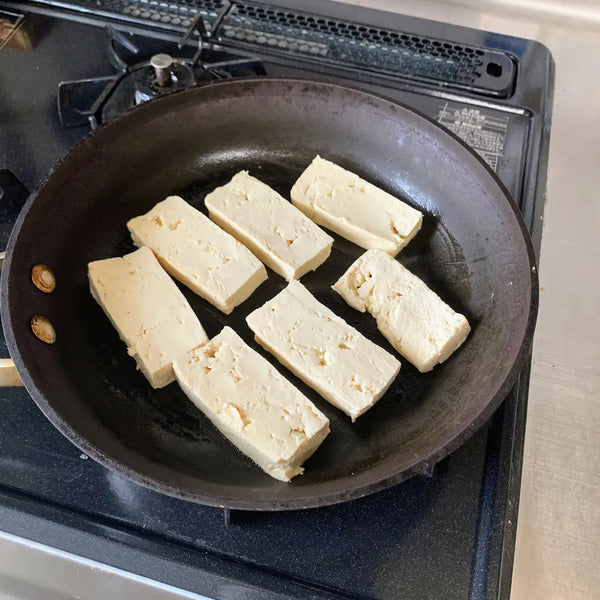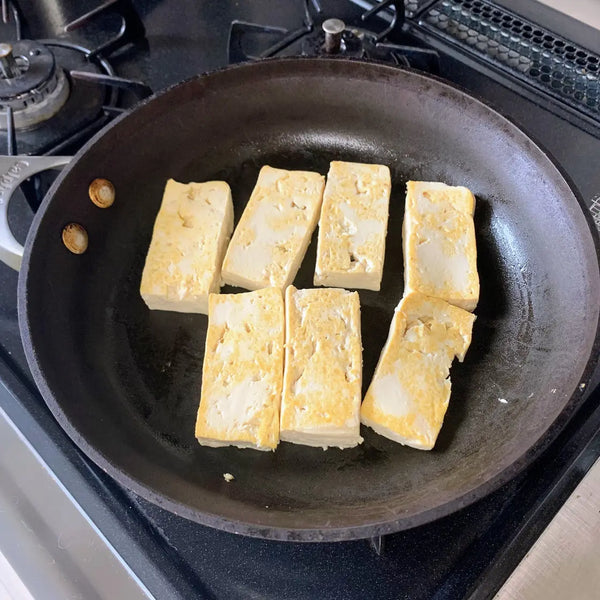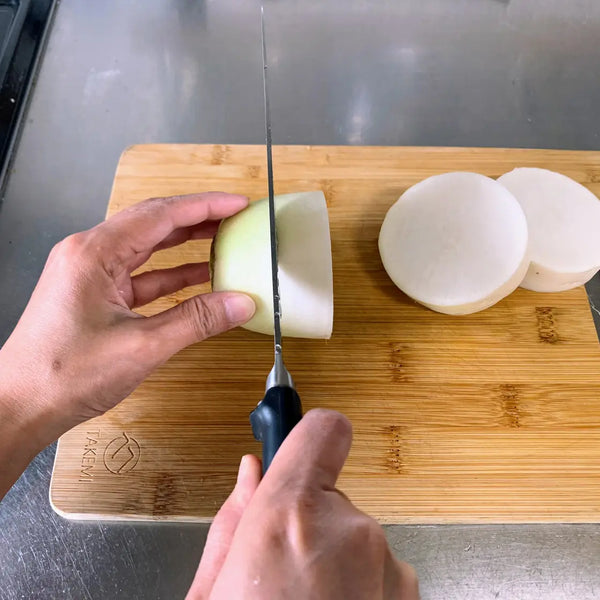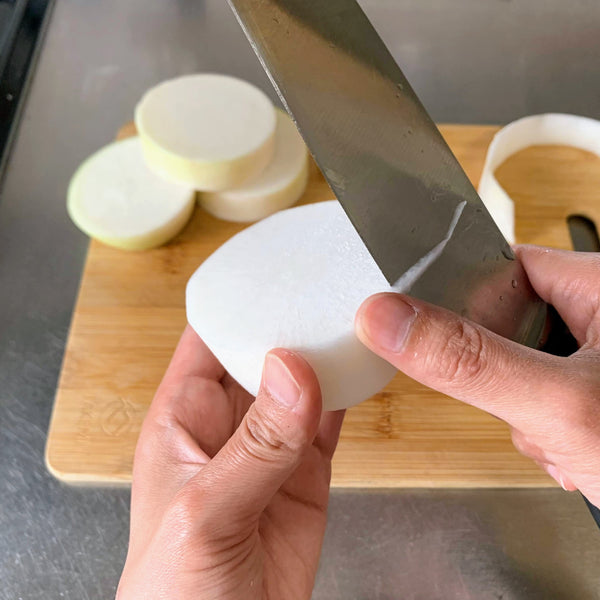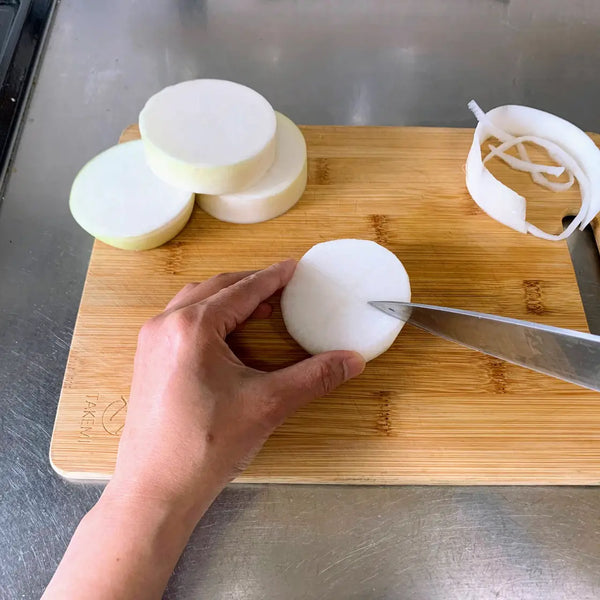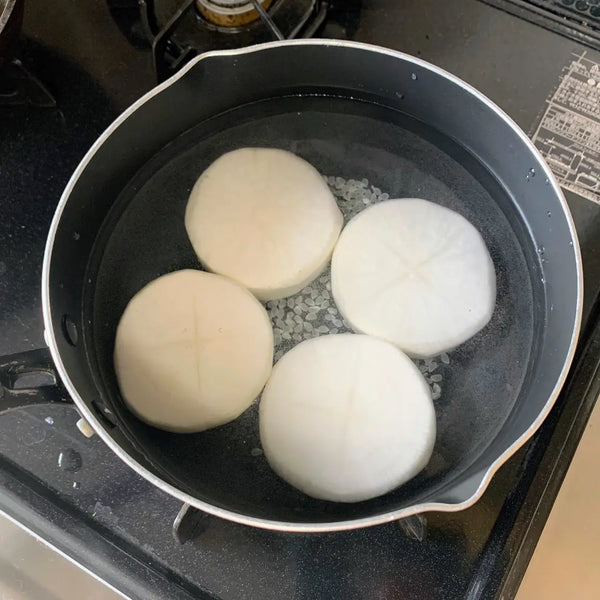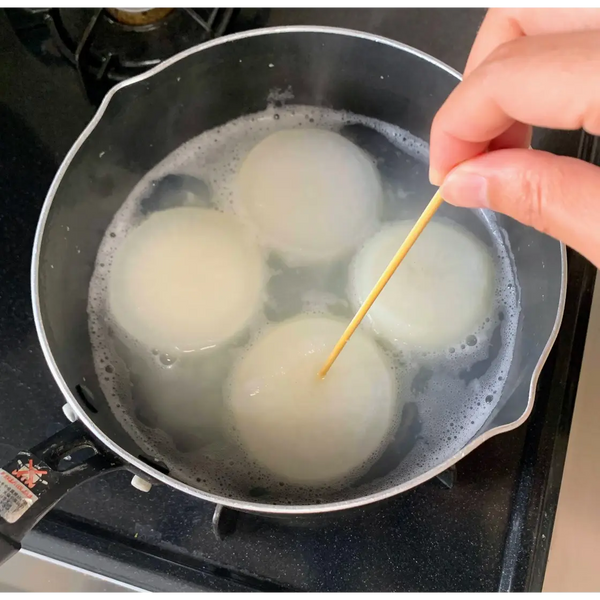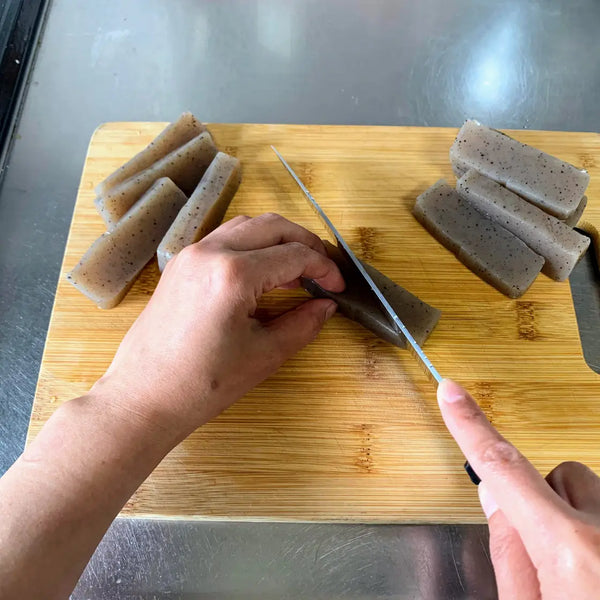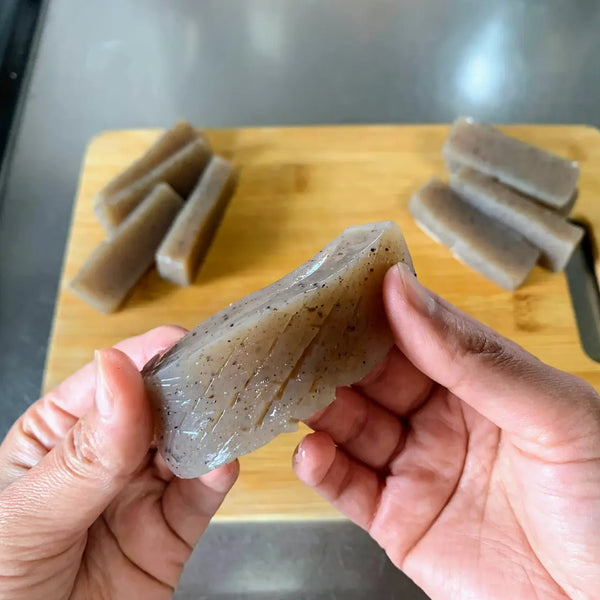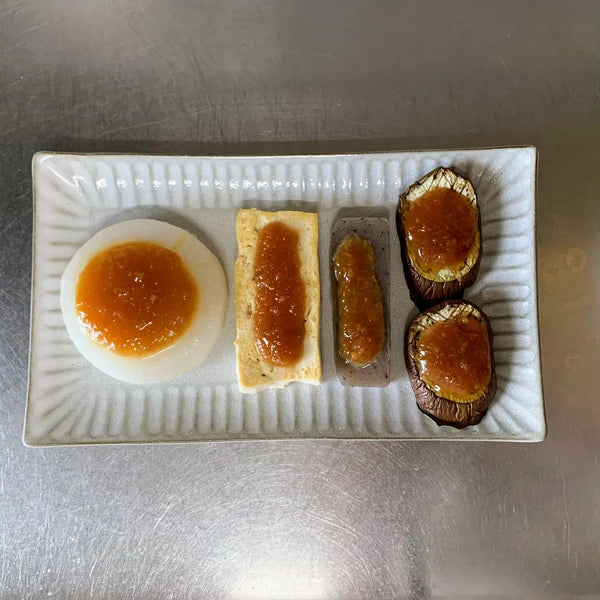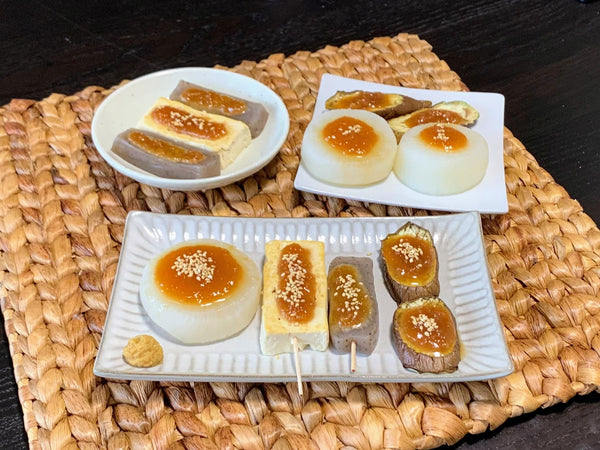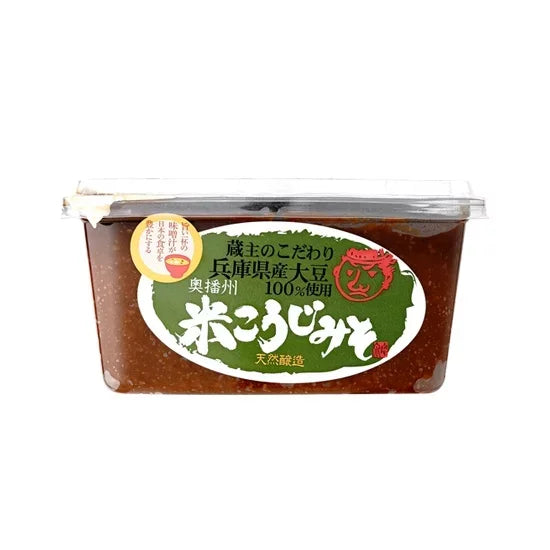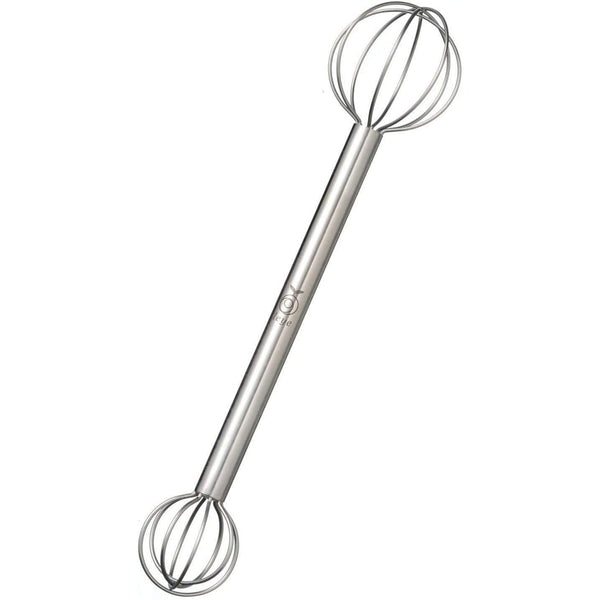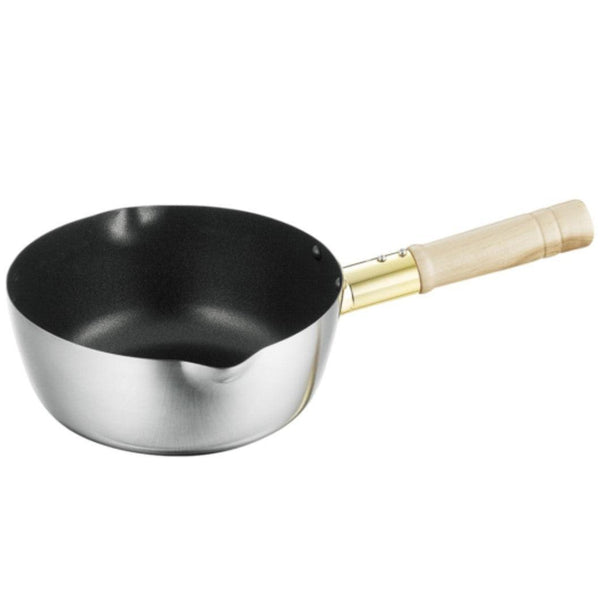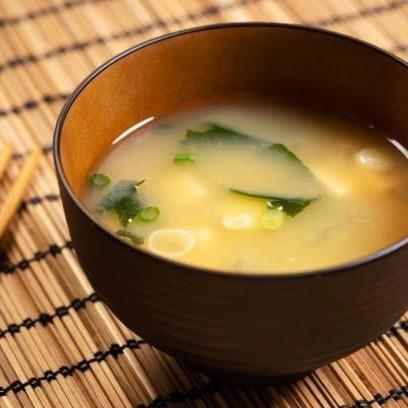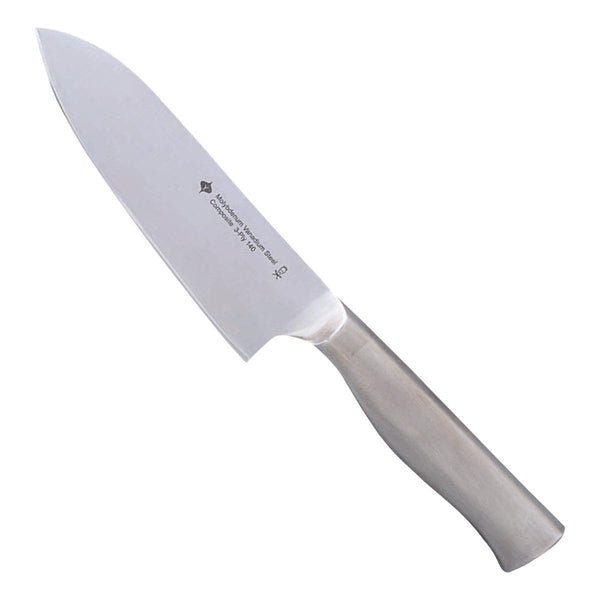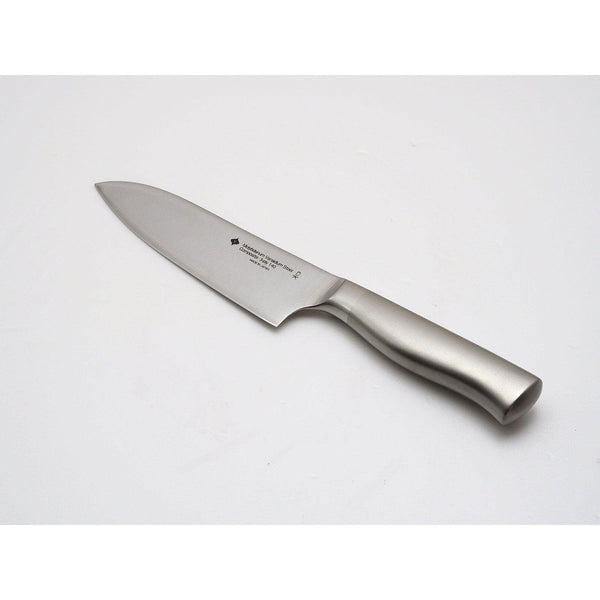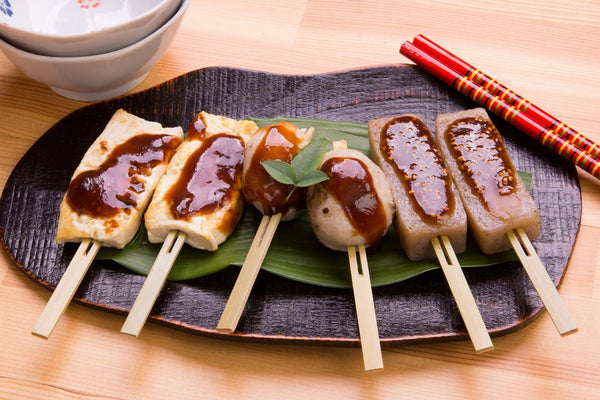
Miso dengaku, also known as dengaku miso, is a traditional Japanese dish that consists of grilled or simmered ingredients such as tofu, konnyaku, eggplant, and daikon, all topped or dipped into a rich dengaku miso sauce.
This sauce is essentially seasoned miso, made by cooking miso paste with Japanese seasonings like mirin and sake until it forms a thick, flavorful coating.
The combination of the savory miso dengaku sauce with simple ingredients like tofu and eggplant makes this a delicious and satisfying dish. Tofu dengaku is particularly popular as it pairs beautifully with drinks.
The origins of dengaku miso date back to the Eiroku period (1558–1570), when skewered and grilled tofu topped with miso paste became popular in Japan. The name "dengaku" was inspired by the skewered tofu’s resemblance to the dengaku-houshi, a man who danced to worship the god of rice fields and prayed for a good harvest during planting season.
When exploring the history of dengaku, it’s impossible not to mention oden, another iconic Japanese dish that actually evolved from dengaku miso, as it used to be eaten with a similar miso sauce. Here's how to make Kyoto style Japanese oden if you're interested.
The flavor of dengaku miso varies depending on the type of miso used and the region of Japan. Variations may include yuzu, peppercorn, sesame, or other types of miso. The ingredients in dengaku miso can also change regionally, though common options include konnyaku, tofu, eggplant, radish, taro, shiitake mushrooms, fish, and meat.
Making miso dengaku at home is simple! You can choose any miso for the sauce and your favorite ingredients for grilling or simmering. In this recipe, we’ll show you how to make a classic dengaku miso sauce and prepare popular ingredients like eggplant, tofu dengaku, radish, and konnyaku (konjac) for an authentic Japanese experience.
